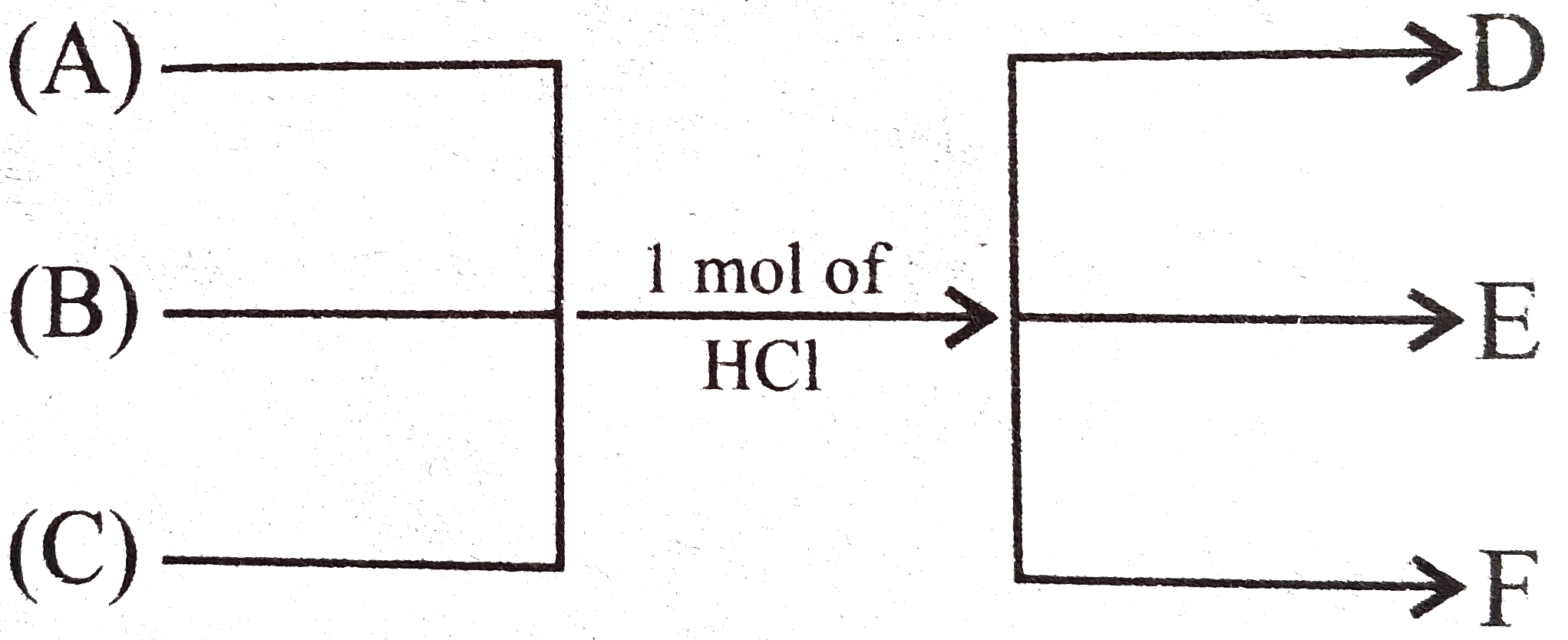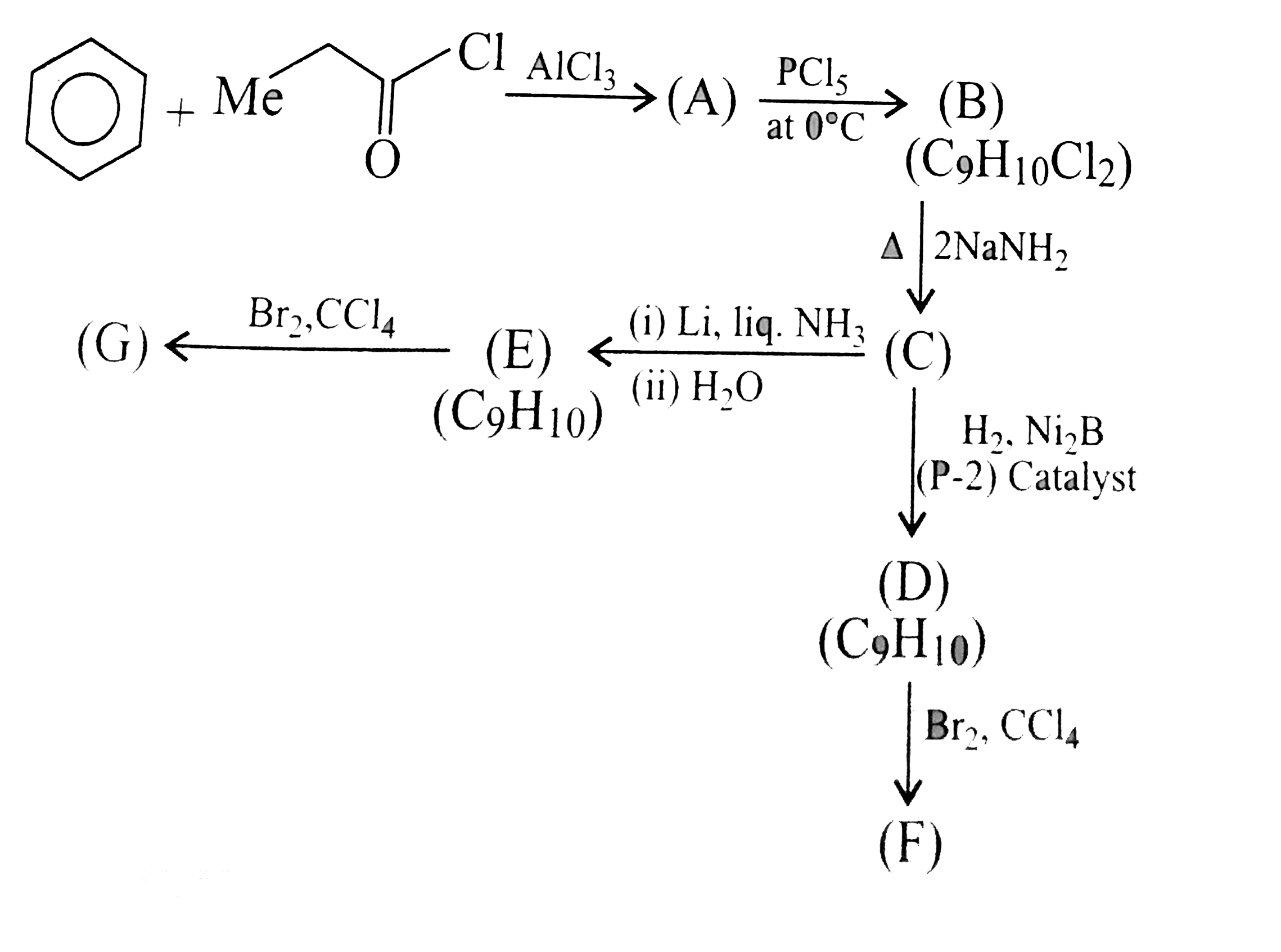
The compound (E) is:
a.Benzene
b.Phenol
c.
d.
The correct Answer is:C
Topper's Solved these Questions
- REDUCTION AND OXIDATION REACTION OF ORGANIC COMPOUNDSBOOK - CENGAGE CHEMISTRY ENGLISHCHAPTER - REDUCTION AND OXIDATION REACTION OF ORGANIC COMPOUNDSEXERCISE - Exercise (Multiple Correct)
35 Videos
- REDUCTION AND OXIDATION REACTION OF ORGANIC COMPOUNDSBOOK - CENGAGE CHEMISTRY ENGLISHCHAPTER - REDUCTION AND OXIDATION REACTION OF ORGANIC COMPOUNDSEXERCISE - Exercise (Single Correct)
90 Videos
- REDUCTION AND OXIDATION REACTION OF ORGANIC COMPOUNDSBOOK - CENGAGE CHEMISTRY ENGLISHCHAPTER - REDUCTION AND OXIDATION REACTION OF ORGANIC COMPOUNDSEXERCISE - EXERCISES
1 Videos
- QUALITATIVE INORGANIC SALT ANALYSISBOOK - CENGAGE CHEMISTRY ENGLISHCHAPTER - QUALITATIVE INORGANIC SALT ANALYSISEXERCISE - Viva Voce Questions And Part-C (Analysis Of Cations)
42 Videos
- SOLID STATEBOOK - CENGAGE CHEMISTRY ENGLISHCHAPTER - SOLID STATEEXERCISE - Ex 1.2 (Objective)
9 Videos
Similar Questions
Identify (A) to (E).
(a) An inorganic iodide (A) on heating with a solution of KOH gives a gas (B) and the solution of a compound (C).
(b) The gas (B) on ignition air gives a compound (D) and water.
( C) Copper sulphate is reduced to the metal on passing (B) through the solution.
(d) A precipitate of the compound (E) is formed on reaction of (C) with copper sulphate solution.
View Solution(A)+NaCl→(B) (white ppt.)
(B)+Ki→(C) (green ppt).
(C)+KI(excess)→(D)+(E) (colourless solution)
(E)+NH3+KOH→(F)
Q. Type of hybridization in compound (E) is:
View Solution(i)A black coloured compound (B) is formed on passing H2S through the solution of a compound (A) in NH4OH
(ii)(B) on treatment with HCl and potassium chlorate or aquaregia gives (A)
(iii)(A) on treatment with KCN gives a buff/reddish-brown coloured precipitate which dissolves in excess of this reagent forming a compound (C).
(iv)The compound (C) is changed into a compound (D) when its aqueous solution is boiled in air.
(v)The solution of (A) was treated with excess of NaHCO3 & then with bromine water. On cooling & shaking for some time, a green colour of compound (E) is formed.No change is observed on heating.
Identify (A) to (E) and give chemical equations.
View Solutioni. (A), a compound with lowest number of C atoms, is unsaturated hydrocarbon and is optically active.
ii. (B), a compound with lowest number of C atoms, is unsaturated hydrocarbon and shows diastereomerism.
iii. (C), a compound with lowest number of C atoms and unsaturated hydrocarbon, shows both optical and geometrical isomerism.
Following is the reaction sequence of A, B, and C.

The structure of compound (E) is:
View SolutionParagraph for problems 9−15

Compound (E) is:
View SolutionWhich hydrogen in compound (E) is easily replaceable during bromination reaction in presence of light ?

View SolutionConsider the following reaction :
 ,
,
 .
.
The compound D is an ortho-isomer and E is a p−isomer.ThecompoundsDandE, respectively, are :
View SolutionWhich hydrogen in compound (E) is easily replaceable during bromination reaction in presence of light ?
CH3δ−CH2γ−CHβ=CH2α(E)
View SolutionTwenty millilitres of a gaseous hydrocarbon (A) was exploded with excess of oxygen in eudiometer tube. On cooling, the volume was reduced by 50ml. On further treatement with KOH solution, there was a further contraction of 40 ml.

Compound (E) is:
View SolutionAn organic compound (A) (C6H10O) on reaction with CH3MgBr followed by acid treatment gives compound (B). The compound (B) on ozonolysis gives compound (C ), which in the presence of a base gives 1-acetyl cyclopentene (D). The compound (B) on reaction with HBr gives compound (E ). Write the structures of (A), (B), (C ), (D), and (E ). Show how (D) is formed from (C ).
View Solution

